A butterfly is a winged insect with scales on its wings. Butterflies come in a variety of colors, sizes, and patterns. It is estimated that there are around 20,000 different butterfly species. These different types of butterflies live all around the world. In all ecosystems, butterflies are essential to plants that depend on cross-pollination. They visit flowering plants, feeding on the nectar found in the flowers and assisting in the pollination process.
Orange is a natural color, which occurs due to pigmentation and is found both on open and closed wings of butterflies. Orange butterflies are easy to identify due to their bright iridescence. Orange coloration is often paired with black, either in patches, dots or bands. Orange butterflies are often associated with passion. Here are some of the common examples of orange butterflies:
- Banded Orange heliconian (Dryadula phaetusa)
- Autumn Leaf (Doleschallia bisaltide)
- Band-celled Sister (Adelpha fessonia)
- Common Leopard (Phalanta phalantha)
- Blomfild’s Beauty
- Flame-bordered Charaxes (Charaxes protoclea)
- Foxy Charaxes (Charaxes saturnus)
- Two-tailed pasha (Charaxes jasius)
- Crimson Patch (Chlosyne janais)
- Gulf Fritillary (Agraulis vanillae)
- Leopard Lacewing (Cethosia cyane)
- Numata Longwing (Heliconius numata)
- Tiger Longwing (Heliconius hecale)
- Isabella’s Longwing (Eueides isabella)
- Mimic Eggfly (Hypolimnas misippus)
- Procilla Beauty (Panacea procilla)
- Spotted Amberwing (Thyridia Psidii)
- Tawny Coaster (Acraea terpsicore)
- Disturbed Tigerwing (Mechanitis polymnia)
- Tawny Emperor (Asterocampa clyton)
- Hackberry butterflies (Asterocampa)
- Mexican silverspot (Dione moneta)
- Harmonia Tigerwing ( Tithorea harmonia)
Banded Orange

Also known as the banded orange heliconian, banded orange, or orange tiger, has wingspan that ranges from 86 to 89 mm, and it is colored a bright orange with thick black stripes in males and a duller orange with fuzzier black stripes in females.
Autumn Leaf

The autumn leaf, is a nymphalid butterfly found in South Asia, Southeast Asia, and Australia. It’s wings are orange brown but with the forewings broadly darkened at the apex. There are four to five white spots in the black apex of the forewing. An irregular cell-end black streak reaches the black distal margin. Underneath, the wings are greyish brown and marked with various irregular shaped streaks/patches in different colors.
Common leopard
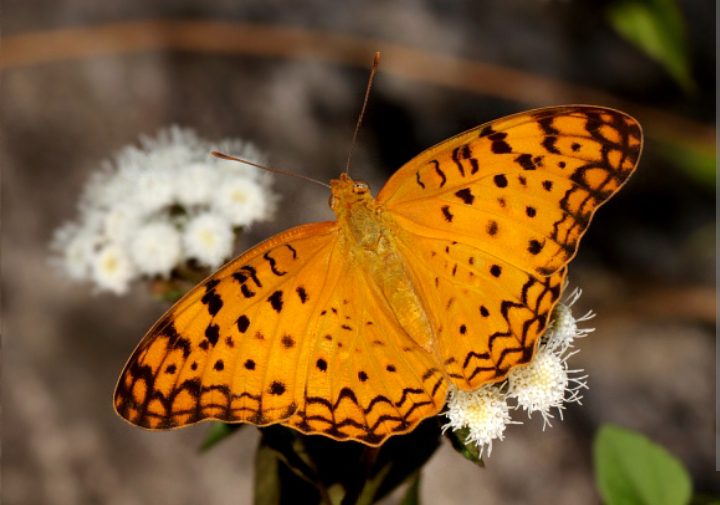
The common leopard is a medium-sized butterfly with a wingspan of 50–55 mm with a tawny colour and marked with black spots. The underside of the butterfly is more glossy than the upper and both the male and female are similar looking. A more prominent purple gloss on the underside is found in the dry-season form of this butterfly.
Blomfild’s Beauty
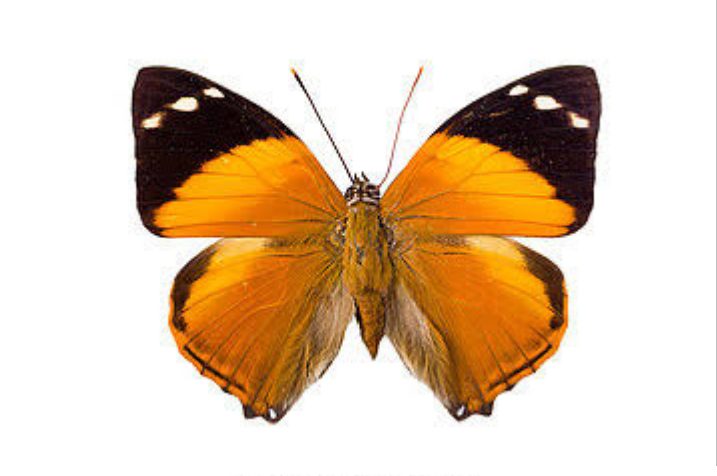
Upperside of male is red-orange, female is brown; both a have black forewing apex with three white spots. Underside of hindwing has a wavy brown and tan pattern with two submarginal eyespots.
Flame-bordered Charaxes
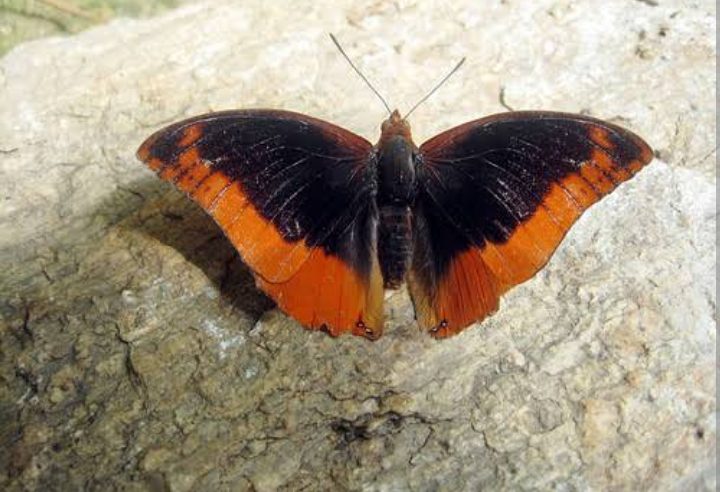
A stunning butterfly from western Africa. Its lower central portions of the female’s wings are white-hot; the wingtips display a range of yellow-to-orange spots, and a strip of brilliant orange frames each wing. (The males’ wings are a muted brownish-black, but also bordered in fiery orange. From below, it is much more toned down, colored in muted browns and grays with a single dark eye spot.
Foxy Charaxes
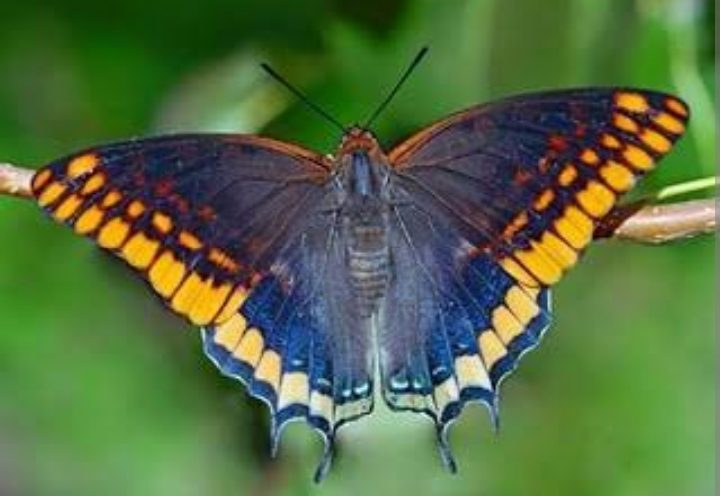
The background colour of all four wings is a very dark blackish brown, with a broad orange postdiscal band traversing both pairs of wings from the leading edge of the forewings almost to the anal margin of the hindwings. The forewing outer margins are orange traversed by black-scaled veins.
The hindwing has 6 orange marginal lunules, the lower three are white-edged to completely white. There are typically three or four blue submarginal spots towards the anal angle. The body and the basal area of all four wings is a tawny orange-brown.
Two-tailed pasha

The upperside ground colour of the wings is dark brownish-black, with some changeable purplish sheen viewed at varying angles; forewing with suggestion of darker discal bars, postdiscal spots orange. Hindwing is characterized with whitish patch near costal border, dusted with brownish scales; outer border of both wings deep orange-ochreous, divided by black-scaled veins.
Crimson Patch

The dorsal and ventral wing surface is black with several undulating rows of small white spots on the medial forewings and along all outer wing margins. On each dorsal hindwing is a medial orange-red patch situated anteriorly. The ventral hindwings have a fragmented yellow proximal patch bordered by a thick postmedial band of red that does not reach the wing margins.
Gulf fritillary

The gulf fritillary is a medium-sized butterfly that has extended forewings and a wingspan range of 6.5 to 9.5 cm. This butterfly exhibits sexual dimorphism as females are typically distinctively larger in size than males. The underside of the wings is brown and speckled with silvery white dots. In contrast, the top surface layer of the wings is deep orange in color with black streaks running across.
Leopard Lacewing
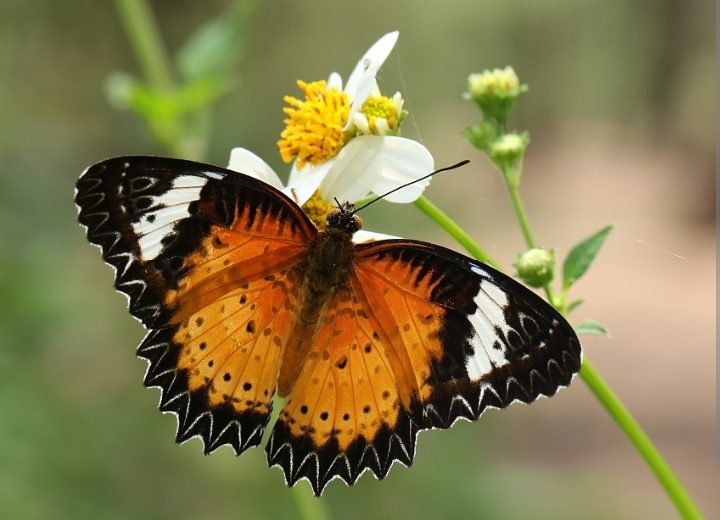
The male Leopard Lacewing has orange on the inside of its wings. The male also has brighter colors on the outside wings, while the female’s inside and outside wings appear white or yellow and are not as bright. The female butterflies tend to move very little until they are mated.
Numata Longwing

Numata Longwing has a wingspan of 78 millimetres (3.1 in). These very large butterflies have long and rounded wings of brown and orange color, with very variable markings due to its capacity of mimicry with several species. The caterpillar is white with black spots and black thorns.
Isabella’s Longwing

Isabella’s Longwing is a large butterfly with a wingspan of 65–90 millimetres. The uppersides of the wings is dark brown, with orange bands and yellowish markings on the edges of the forewings. The undersides of the wings are quite similar to the uppersides, but the edges of the hindwings show a series of small blue spots.
Tawny Coaster
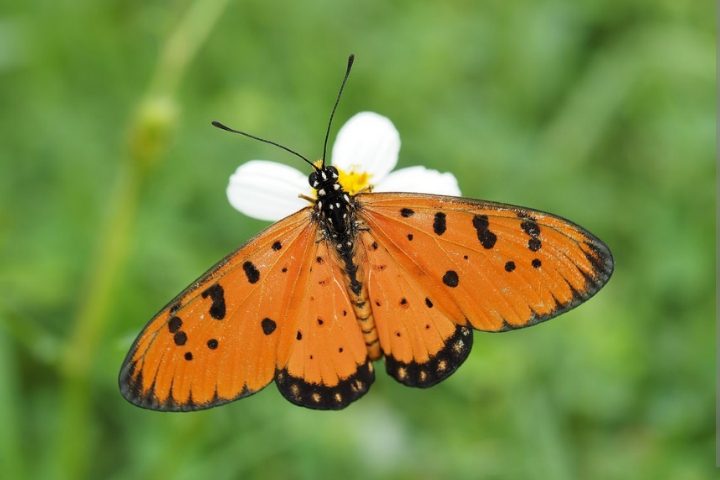
The male is deep orange while the female is pale tawny yellow. The forewing has two transverse black spots in the cell, a broader spot at cell-end bar and a discal series of black spots in spaces 2-6 and 10. Underneath, the wings are salmon orange in the male and pale tawny yellow in the female. Both wings have black markings as per the upperside. Antennae are black, head and thorax are black spotted with pale yellow and white.
Tawny emperor

Tawny emperor has a wingspan of 2 to 2.6 inches. The upperside is mostly dark brown. The forewing is an orange-brown color with pale orange-yellow spots. The underside is mainly gray brown with the forewing having some black and pale yellowish markings. This butterfly may be seen flying near houses, gravel driveways, near water, muddy places, gardens, and woodlands.